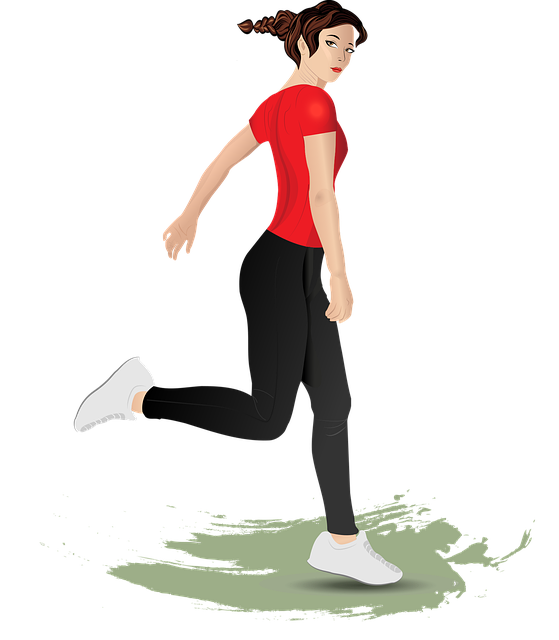Physical therapy provides an effective, holistic approach to managing joint pain, improving flexibility, and enhancing mobility. Therapists employ manual techniques like joint mobilization and soft tissue manipulation, along with customized exercises including stretching, yoga, and targeted movements, to strengthen muscles supporting affected joints. By incorporating these strategies and adopting ergonomically conscious behavior, dietary adjustments with anti-inflammatory foods, individuals can achieve long-term wellness and significantly reduce the risk of further injury.
Are you struggling with joint pain that limits your flexibility and range of motion? This comprehensive guide explores effective solutions to help alleviate discomfort and restore mobility. We delve into the root causes, offering insights on how physical therapy can be a game-changer in managing joint pain. Discover evidence-based techniques, from stretching and strengthening exercises to lifestyle adjustments, designed to enhance flexibility and promote long-term maintenance. Reclaim your freedom of movement with these powerful strategies, including the role of physical therapy for joint pain relief.
- Understanding Joint Pain and Its Impact on Flexibility
- Physical Therapy Techniques for Enhanced Mobility
- Incorporating Stretching and Strengthening Exercises
- Lifestyle Changes for Long-Term Flexibility Maintenance
Understanding Joint Pain and Its Impact on Flexibility

Joint pain, a common issue affecting people of all ages, can significantly impact an individual’s flexibility and range of motion. This discomfort often arises from various factors such as arthritis, injury, or chronic inflammation. When joints become inflamed, the surrounding tissues can stiffen, leading to reduced mobility. As a result, simple tasks like reaching for an object on a high shelf or performing a stretching exercise might become challenging and even painful.
Physical therapy plays a pivotal role in addressing joint pain and improving flexibility. Skilled therapists employ a multitude of techniques, including gentle movements, specialized exercises, and therapeutic modalities, to reduce inflammation, promote joint lubrication, and strengthen the muscles surrounding the affected area. By tailoring these treatments to individual needs, physical therapy for joint pain offers a holistic approach to enhancing mobility, ensuring individuals can regain their range of motion and engage in activities they enjoy without discomfort.
Physical Therapy Techniques for Enhanced Mobility

Physical therapy is a game-changer when it comes to managing joint pain and improving flexibility. Therapists employ various techniques tailored to individual needs, focusing on enhancing mobility and reducing discomfort. One common approach involves manual therapy, where therapists use their skilled hands to apply specific techniques like joint mobilization and soft tissue manipulation. These methods can help relax muscles, improve joint lubrication, and restore range of motion.
Additionally, physical therapy incorporates exercises designed to strengthen surrounding muscles, which supports the joints and promotes better mobility. These exercises may include stretching routines, gentle yoga poses, or specialized movements targeting specific areas of concern. The therapists guide patients through these activities, ensuring proper form and providing education on maintaining a flexible and healthy body.
Incorporating Stretching and Strengthening Exercises

Incorporating stretching and strengthening exercises is a powerful strategy in the arsenal of anyone seeking to enhance flexibility and range of motion, particularly those dealing with joint pain. Physical therapy for joint pain often emphasizes this dual approach, aiming to not only relieve discomfort but also improve overall mobility. Stretching helps lengthen muscles and connective tissues, reducing tension and improving the ease of movement. It’s especially beneficial for individuals experiencing stiffness or limited motion due to inactivity or injury.
Strengthening exercises, on the other hand, build muscle strength around joints, providing better support and stability. This is crucial for maintaining joint health and preventing further damage. Exercises like resistance bands, weight training, and bodyweight exercises can all be tailored to target specific areas of the body, offering a comprehensive solution for managing joint pain while enhancing overall physical performance.
Lifestyle Changes for Long-Term Flexibility Maintenance

Maintaining flexibility and a wide range of motion is not just about achieving short-term gains; it’s a commitment to long-term health and wellness. Beyond regular stretching routines, incorporating certain lifestyle changes can significantly contribute to preserving and enhancing your physical capabilities. One effective approach is integrating physical therapy for joint pain into your self-care regimen. Professionals in this field can provide tailored exercises and techniques to improve mobility, strengthen supporting muscles, and reduce the risk of future injuries.
Adopting a holistic mindset is key; this includes prioritizing consistent exercise, focusing on low-impact activities that promote flexibility, and ensuring adequate rest for muscle recovery. Ergonomically conscious behavior, such as maintaining proper posture while sitting or lifting objects, can also play a substantial role in preventing joint strain. Additionally, making dietary adjustments to include nutrient-rich foods known for their anti-inflammatory properties may help support joint health and overall flexibility maintenance.
Joint pain can significantly hinder flexibility and range of motion, but with a comprehensive approach that includes physical therapy techniques, targeted exercises, and lifestyle adjustments, it’s possible to achieve long-term relief and enhanced mobility. By understanding the impact of joint pain and implementing solutions like those discussed in this article, individuals can experience improved flexibility, reduced discomfort, and an overall better quality of life. Consider incorporating these strategies, including physical therapy for joint pain, into your routine for optimal results.
